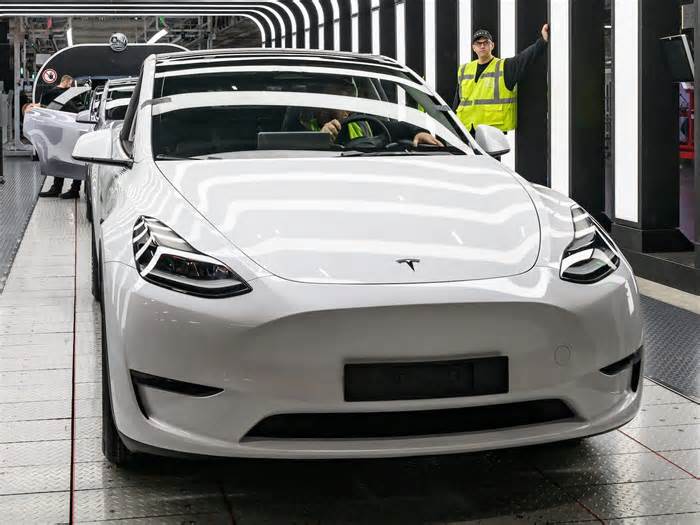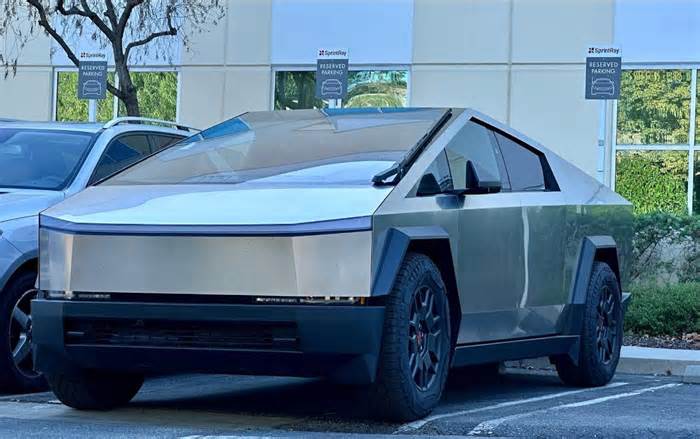
NRO chief: “You can’t hide” from our new swarm of SpaceX-built spy satellites
- by Ars Technica
- Nov 05, 2024
- 0 Comments
- 0 Likes Flag 0 Of 5

Minimize to nav
The director of the National Reconnaissance Office has a message for US adversaries around the world.
"You can’t hide, because we’re constantly looking," said Chris Scolese, a longtime NASA engineer who took the helm of the US government's spy satellite agency in 2019.
The NRO is taking advantage of SpaceX's Starlink satellite assembly line to build a network of at least 100 satellites, and perhaps many more, to monitor adversaries around the world. So far, more than 80 of these SpaceX-made spacecraft, each a little less than a ton in mass, have launched on four Falcon 9 rockets. There are more to come.
A large number of these mass-produced satellites, or what the NRO calls a "proliferated architecture," will provide regularly updated imagery of foreign military installations and other sites of interest to US intelligence agencies. Scolese said the new swarm of satellites will "get us reasonably high-resolution imagery of the Earth, at a high rate of speed."
This is a significant change in approach for the NRO, which has historically operated a smaller number of more expensive satellites, some as big as a school bus.
"We expect to quadruple the number of satellites we have to have on-orbit in the next decade," said Col. Eric Zarybnisky, director of the NRO's office of space launch, during an October 29 presentation at the Wernher von Braun Space Exploration Symposium in Huntsville, Alabama.
The NRO is not the only national security agency eyeing a constellation of satellites in low-Earth orbit. The Pentagon's Space Development Agency plans to kick off a rapid-fire launch cadence next year to begin placing hundreds of small satellites in orbit to detect and track missiles threatening US or allied forces. The Space Force is also interested in buying its own set of SpaceX satellites for broadband connectivity.
The Pentagon started moving in this direction about a decade ago, when leaders raised concerns that the legacy fleets of military and spy satellites were at risk of attack. Now, Elon Musk's SpaceX and a handful of other companies, many of them startups, specialize in manufacturing and launching small satellites at relatively low cost.
"Why didn't we do this earlier? Well, launch costs were high, right?" said Troy Meink, the NRO's principal deputy director, in an October 17 discussion hosted by the Mitchell Institute for Aerospace Studies. "The cost of entry was pretty high, which has come way down. Then, digital electronics has allowed us to build capability in a much smaller package, and a combination of those two is really what's enabled it.”
A constant vigil
NRO officials still expect to require some large satellites with sharp-eyed optics—think of a Hubble Space Telescope pointed at Earth—to resolve the finest details of things like missile installations, naval fleets, or insurgent encampments. The drawback of this approach is that, at best, a few big optical or radar imaging satellites only fly over places of interest several times per day.
With the proliferated architecture, the NRO will capture views of most places on Earth a lot more often. Two of the most important metrics with a remote-sensing satellite system are imaging resolution and revisit time, or how often a satellite is over a specific location on Earth.
"We need to have persistence or fast revisit," Scolese said on October 3 in a discussion at the Center for Strategic and International Studies, a nonprofit Washington think tank. "You can proliferate your architecture, put more satellites up there, so that a satellite is always coming over an area within a given reasonable amount of time that’s needed by the users. That’s what we’re doing with the proliferated architecture.
"That’s enabled by a really rich commercial industry that’s building hundreds or thousands of satellites," Scolese said. "That allowed us to take those satellites, adapt them to our use at low cost, and apply whatever sensor is needed to go off and acquire the information that’s needed at whatever revisit time is required."
The NRO's logo for its proliferated satellite constellation, with the slogan "Strength in Numbers."
Credit:
National Reconnaissance Office
Please first to comment
Related Post
Stay Connected
Tweets by elonmuskTo get the latest tweets please make sure you are logged in on X on this browser.
Sponsored
Popular Post
Middle-Aged Dentist Bought a Tesla Cybertruck, Now He Gets All the Attention He Wanted
32 ViewsNov 23 ,2024
tesla Model 3 Owner Nearly Stung With $1,700 Bill For Windshield Crack After Delivery
32 ViewsDec 28 ,2024






 Energy
Energy



















